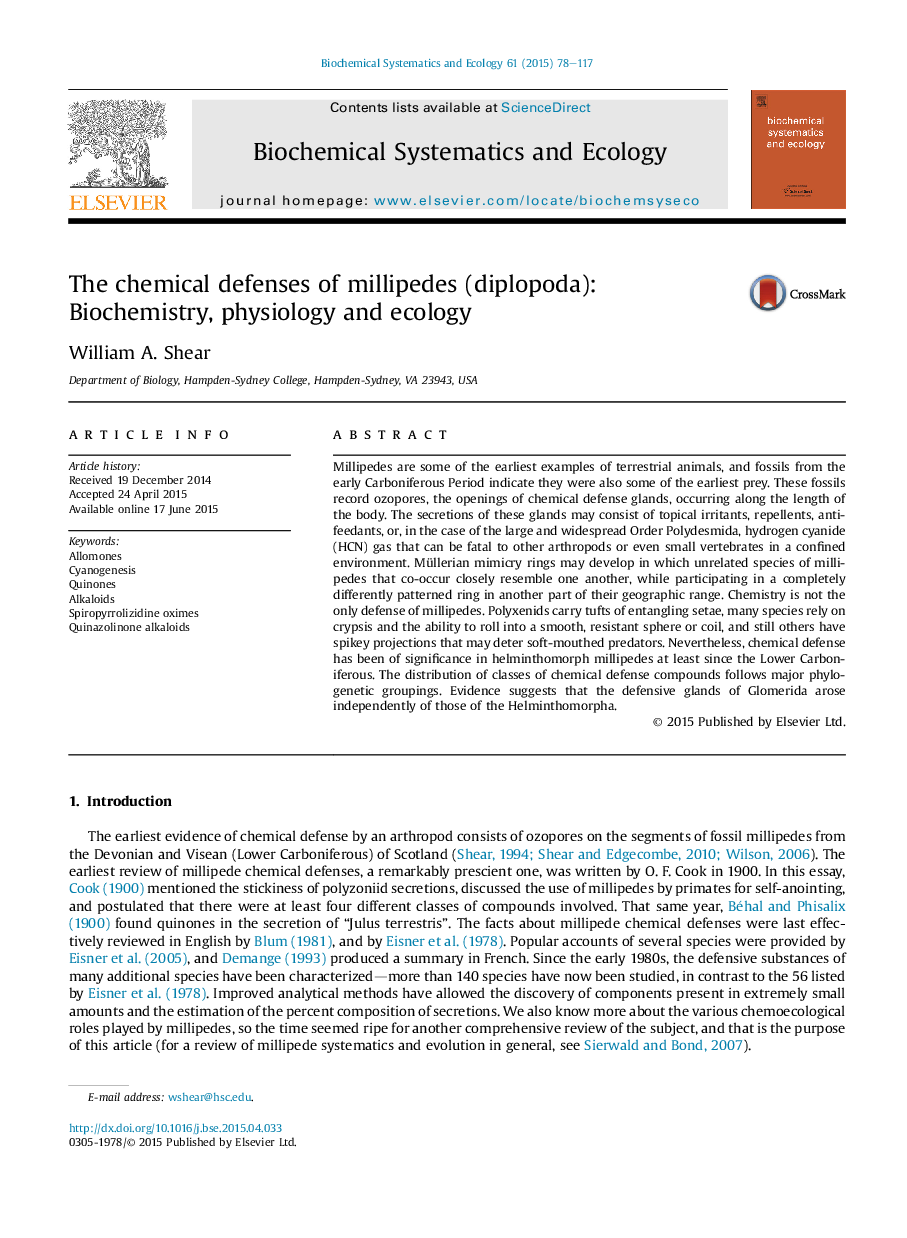| کد مقاله | کد نشریه | سال انتشار | مقاله انگلیسی | نسخه تمام متن |
|---|---|---|---|---|
| 1354187 | 1500405 | 2015 | 40 صفحه PDF | دانلود رایگان |
• The chemical defenses of millipedes are reviewed from the viewpoints of biochemistry, physiology and ecology.
• Some orders of millipedes lack chemical defenses but have other means of protection against predators and parasites.
• The biochemistry of millipede chemical defenses is mapped on a phylogeny of millipede orders.
• It is likely that chemical defense arose independently in the order Glomerida and in the Helminthomorpha.
Millipedes are some of the earliest examples of terrestrial animals, and fossils from the early Carboniferous Period indicate they were also some of the earliest prey. These fossils record ozopores, the openings of chemical defense glands, occurring along the length of the body. The secretions of these glands may consist of topical irritants, repellents, antifeedants, or, in the case of the large and widespread Order Polydesmida, hydrogen cyanide (HCN) gas that can be fatal to other arthropods or even small vertebrates in a confined environment. Müllerian mimicry rings may develop in which unrelated species of millipedes that co-occur closely resemble one another, while participating in a completely differently patterned ring in another part of their geographic range. Chemistry is not the only defense of millipedes. Polyxenids carry tufts of entangling setae, many species rely on crypsis and the ability to roll into a smooth, resistant sphere or coil, and still others have spikey projections that may deter soft-mouthed predators. Nevertheless, chemical defense has been of significance in helminthomorph millipedes at least since the Lower Carboniferous. The distribution of classes of chemical defense compounds follows major phylogenetic groupings. Evidence suggests that the defensive glands of Glomerida arose independently of those of the Helminthomorpha.
Journal: Biochemical Systematics and Ecology - Volume 61, August 2015, Pages 78–117
